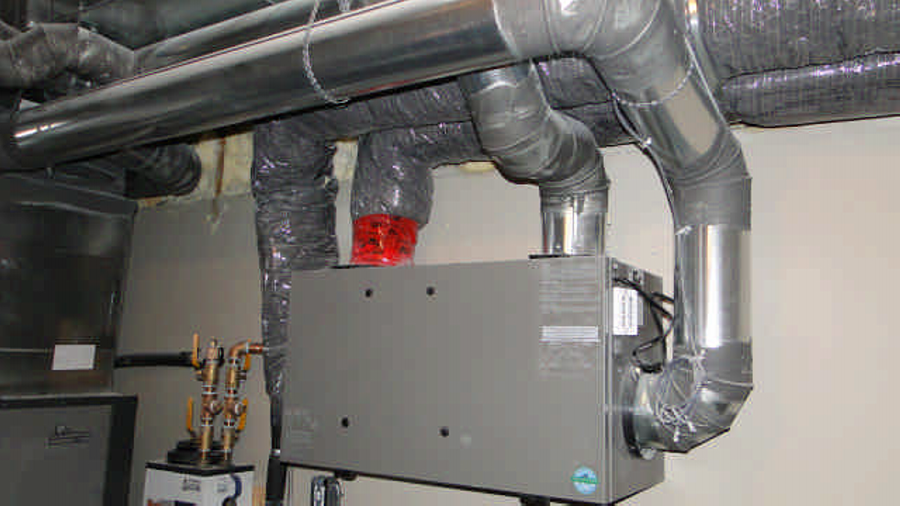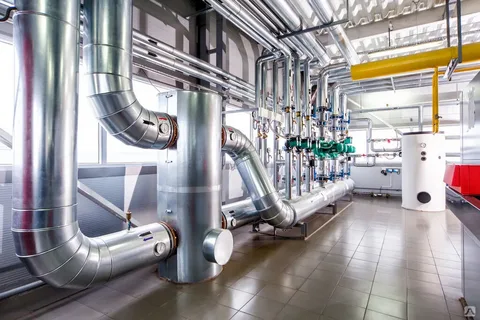Are you looking for an efficient way to control the climate in a single room? Look no further than a single room heat recovery system. These innovative systems offer a way to heat or cool a single space while recovering energy that would otherwise be lost. In this blog post, we will explore the ins and outs of single-room heat-recovery systems, including how they work, their benefits, key features to look for, installation considerations, and more.
Understanding Single-Room Heat-Recovery Systems
Single-room heat-recovery systems, often termed small heat-recovery ventilators (HRVs), stand out for their ability to efficiently maintain a desirable climate within isolated spaces. Unlike conventional heating or cooling solutions, these systems are adept at recycling energy that would typically dissipate into the environment. By leveraging the temperature of outgoing stale air, they pre-condition the fresh air being introduced into the room. This energy exchange mechanism is at the core of what makes these systems both environmentally friendly and cost-effective.
The heat exchanger is at the heart of a single-room heat-recovery system, a critical component responsible for the energy transfer between the incoming and outgoing airstreams. This process not only conserves energy but also significantly enhances the air quality of the space. The system effectively manages pollutants and moisture levels by continuously cycling fresh air in and pushing stale air out, contributing to a healthier indoor environment.
The versatility of these systems is another noteworthy aspect, making them suitable for various settings, from residential rooms to individual offices or small commercial spaces. The operation of these units is remarkably efficient, utilizing the inherent energy in the air that would otherwise be lost, thus providing a sustainable solution for single-room climate control without the extensive infrastructure or cost associated with whole-house or large-scale systems.
How Does a Small Heat Recovery Ventilator Work?
A finely engineered heat exchanger at the core of a small heat recovery ventilator (HRV) facilitates a continuous energy exchange between incoming fresh air and outgoing stale air. As the stale, warm air is expelled from the room, it passes through one side of the heat exchanger. Concurrently, fresh, cooler air from outside is drawn into the system, passing through the opposite side of the heat exchanger. Here, without the two streams of air mixing, heat from the outgoing air is transferred to the incoming air, warming it up before it enters the room. During warmer months, the process inverses, with the cooler outgoing air reducing the temperature of the warmer incoming air.
This method of pre-conditioning the air significantly reduces the demand on heating and cooling systems, as the temperature of the incoming air is closer to the desired room temperature, easing the energy burden on the overall system. The HRV’s built-in fans ensure this air exchange process is continuous, providing a steady flow of fresh, temperature-regulated air into the space. This operation not only aids in conserving energy but also ensures that the indoor air quality is maintained at optimal levels by constantly removing pollutants and excess humidity from the room, thereby fostering a healthier and more comfortable indoor environment.
The Benefits of Installing a Single-Room Heat-Recovery System
Embracing a single-room heat-recovery system introduces a multitude of advantages to both homeowners and commercial space managers. At the forefront, these systems excel in boosting energy efficiency. By capturing and recycling the energy from outgoing air to precondition incoming air, they reduce reliance on traditional heating and cooling systems. This leads to significant reductions in utility bills and supports a more sustainable environment by conserving energy.
Furthermore, the impact on indoor air quality is another compelling benefit. These systems ensure a continuous supply of fresh air while extracting stale, humid, and polluted air from the room. This constant exchange helps maintain healthier indoor air, which is particularly beneficial for individuals with allergies or respiratory conditions or simply for those aiming to promote a healthier living or working environment.
Single-room heat-recovery systems are lauded for their precision in climate control. They allow for the management of temperature in isolated areas, providing comfort without altering the conditions of surrounding spaces. This feature is especially useful in buildings where different rooms have varying occupancy or usage patterns. These systems are also characterized by their compact and discreet design, allowing for easy integration into various spaces without requiring extensive modifications.
Key Features to Look for in a Single Room Heat Recovery Ventilator
When selecting a single room heat recovery ventilator (HRV), there are several key features to consider to ensure that the system meets your needs for efficiency, functionality, and comfort. Attention to these features can significantly enhance your experience and satisfaction with the unit.
High Energy Recovery Efficiency:
Look for HRVs with high energy recovery ratios. This indicates the system’s effectiveness in transferring heat (or coolness) from the outgoing air to the incoming air, thereby reducing the load on your heating and cooling systems and saving energy.
Low Noise Level:
Since these systems will be operating within a single room, choosing a model that operates quietly is essential to avoid disturbances. A low noise level ensures that the HRV won’t interrupt sleep, work, or leisure activities within the space.
Easy Maintenance:
Opt for units with easy access to filters and core components for cleaning and maintenance. Systems that feature simple, tool-free access for filter replacement can save time and ensure that the unit continues to operate efficiently.
Adjustable Airflow:
The ability to control airflow rates is crucial for matching the system’s performance to your needs. Look for HRVs that allow for adjustable settings to customize the air exchange rate based on occupancy, season, or personal preference.
Compact Design and Aesthetic Flexibility:
Considering the limited space in single rooms, a compact and sleek design can be a significant advantage. Also, models offering aesthetic flexibility, such as interchangeable front panels or hidden installation options, can help ensure the HRV blends seamlessly with the room’s décor.
Installation Considerations for Single Room HRV System
When planning to install a single room HRV system, addressing several factors to guarantee its efficiency and effectiveness is crucial. First and foremost, accurately sizing the system for your space is paramount. A system that’s too small will only partially control the climate, while one that’s too large may lead to unnecessary energy consumption and expense. The positioning of the unit also plays a critical role in its performance. It should be installed in a location that supports optimal airflow and easy access for maintenance purposes. This often means avoiding corners or cramped spaces that could restrict air movement.
Professional installation by a qualified HVAC technician is highly recommended. A professional can ensure that the system is installed according to the manufacturer’s guidelines and local building codes, which can affect both its performance and legality. They can also identify potential challenges unique to your space and suggest the best installation strategies to overcome them. It’s essential to review the maintenance requirements of the system you choose. Some models may require more frequent filter changes or cleaning to maintain efficiency. Understanding these needs upfront can help in planning for the ongoing care of your unit, ensuring it operates at peak performance for years to come.
Operating and Maintaining Your Single Room Heat-Recovery System
Adhering to proper operational and maintenance guidelines is vital to guaranteeing the longevity and efficiency of your single-room heat-recovery system. Ensuring you know the manufacturer’s instructions will provide a solid foundation for practical use. Regular maintenance tasks, such as cleaning or replacing the filters, are essential to maintain air quality and system efficiency. Filters clogged with dust and debris over time can restrict airflow and reduce the system’s ability to perform optimally.
Additionally, scheduling periodic check-ups with a professional can help identify potential issues before they escalate into costly repairs. These professionals can inspect the heat exchanger and other components for signs of wear or damage and ensure that the system is calibrated for peak performance.
Be mindful of the system’s external vents; keeping these areas clear from blockages like leaves, snow, or debris will support the system’s need for unobstructed airflow. By prioritizing these maintenance activities, you can contribute significantly to the operational efficiency of your single-room heat-recovery system. This diligence extends the system’s life and ensures that it continues to provide a comfortable indoor environment efficiently.
Maximizing Efficiency with Small HRV Units
To enhance the performance of your small heat-recovery ventilator (HRV), integrating additional measures can lead to even greater energy conservation. Implementing small HRV units are brilliant, allowing for precise control over temperature settings based on time of day or occupancy, which can significantly reduce unnecessary heating or cooling. Addressing any air leaks or drafts in the room is critical. Sealing gaps around windows, doors, and other areas can prevent the loss of conditioned air, bolstering the system’s efficiency.
Insulation also plays a pivotal role; ensuring that walls, ceilings, and floors are adequately insulated helps maintain the desired temperature with less energy expenditure. When combined with the operation of a single-room heat-recovery system, these steps create a comprehensive approach to minimizing energy usage. Together, they form a more robust strategy for achieving lower utility costs while enjoying a comfortable and well-ventilated space. By focusing on these aspects, users can maximize the benefits of their small-HRV units, contributing to a more energy-efficient and sustainable environment.
Conclusion
Embracing a single-room heat-recovery system represents a forward-thinking choice for those seeking to enhance comfort, health, and efficiency within their personal or professional environments. By investing in this technology, users contribute to a more sustainable future and enjoy the tangible benefits of improved air quality and energy savings. As we striving for innovative ways to optimize our living and working spaces, implementing single-room heat-recovery systems is a creative, practical solution for climate control challenges.
FAQs
Q: Can single room heat recovery systems be implemented in any room size or type?
A: While highly versatile, these systems must be correctly sized to function efficiently in the space in which they’re installed. They suit various environments, from residential bedrooms to office spaces and small commercial venues. The key is professional assessment and installation to ensure the system’s capacity aligns with the room’s dimensions and specific usage needs.
Q: What level of energy efficiency can I anticipate after installing a heat-recovery system in a single room?
A: Energy efficiency gains vary based on several variables, including the area’s size, the system’s usage, and regional climate conditions. Typically, users can expect a noticeable reduction in their heating and cooling expenses, often up to 30%, thanks to the system’s ability to recycle energy effectively.
Q: Is DIY installation an option for these systems, or should I hire an expert?
A: Professional installation by a qualified HVAC technician is advised for optimal functionality and efficiency. This ensures the system is correctly set up by manufacturer specifications and local building codes. Attempting a DIY installation without the necessary expertise may lead to subpar performance or even system damage. A professional can also provide valuable advice on the best system for your needs and how to maintain it for peak performance.
| Related Business Listings |
| Contact Directory |
| Local Business Profiles |
| Other Good Articles to Read |
| Skank Blogs |
| Unreal Blogs |
| Tba Blogs |
| All City Forums |
| Dany Blogs |
| Refuge Blogs |
| The Music Blogs |
| Key Forums |
| The Big Blog Theory |
| Joe Blogs |
| Blogs 4 Me |
| Blogs Emon |



